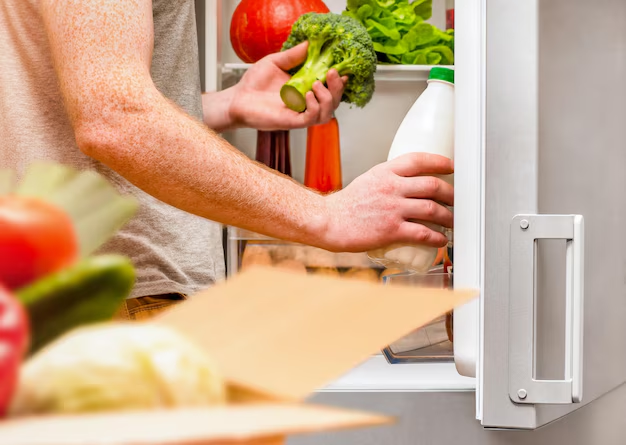How Long Can You Keep Condiments in the Refrigerator? Discover the Surprising Shelf Life of Your Favorite Flavors
What lurks in the depths of your refrigerator door? Chances are, it's a range of condiments collected over countless grocery trips, customized feast plans, or leftover-eating stints. From the classics like ketchup and mayonnaise to the gourmet additions you bought on a whim, condiments are kitchen staples. But have you ever wondered how long they actually last? Are you storing expired products without realizing it? Let’s dive into the world of condiment storage to keep your kitchen safe and your meals tasty.
🏷️ Understanding Condiment Labels
Before exploring the lifespan of condiments, it's crucial to decipher their labels. You typically find three types of dates:
Sell-by: This indicates the last date the product should be sold. It’s meant for sellers, not for you. If stored properly, foods don’t suddenly go bad post sell-by.
Best-by: Used to specify when the product will maintain its best quality. It’s about peak freshness, not safety.
Use-by: This is the manufacturer’s suggestion on the last date the product is at its peak quality. Eating it after this date won’t necessarily be harmful.
Condiments will often use best-by dates, and interpreting these correctly can maximize both safety and flavor.
🥫 Classic Condiments and Their Shelf Lives
Ketchup
A household favorite, ketchup is known for its long shelf life due to high acidity and sugar content. When unopened, it can last 1-2 years. Once opened, it's best used within 6 months when stored in the refrigerator, maintaining optimum taste and freshness.
Mayonnaise
Mayonnaise, with its egg content, requires careful storage. An unopened jar remains safe for consumption for about 3 months past the best-by date. After opening, refrigerate it and aim to use it within 2 months.
Mustard
Whether yellow, Dijon, or spicy brown, mustard boasts of a long shelf life too. Unopened, it can last for a year. Even when opened, mustard holds up for 1 year in the refrigerator without a significant drop in quality.
Soy Sauce
Soy sauce can last almost indefinitely due to its high salt content, but flavor degrades over time. Unopened, it can last for years. Once opened, it's best consumed within 1-2 years if refrigerated, although you might note a subtle change in taste over time.
Barbecue Sauce
Barbecue sauce, with its high sugar and vinegar content, can safely reside in your fridge for 6-9 months once opened. Unopened, it has a shelf life of around 1 year.
Hot Sauce
Fans of spicy food can rest easy: hot sauce remains effective for 6 months after opening, especially if you choose to refrigerate it, which is always a good idea to preserve flavor and color. Unopened, it can last for 3-5 years due to its high vinegar content.
Salad Dressing
Whether vinaigrette or creamy, salad dressing should be consumed within 1-3 months after opening, depending on its type. Oil-based dressings generally have a shorter shelf life than creamy ones.
🗒️ Specialty Condiments: Short but Sweet Lifespan
Pesto
Pesto, particularly the kind with dairy like Parmesan or pecorino, should be used quickly. Once opened, it should be consumed within 5-7 days and kept refrigerated.
Hummus
Fresh or store-bought, hummus should be consumed within 4-6 days after opening. While seemingly long-lasting, it spoils fast, especially homemade versions without preservatives.
Sriracha
This spicy favorite can last in the refrigerator for 9 months after opening. It’s often okay to use for longer but expect taste and texture changes.
🌱 Organic and Homemade Condiments
Organic and homemade condiments, though delicious, often lack preservatives leading to a shorter shelf life. Without commercial stabilizers, they should be consumed more quickly to avoid spoilage. Always rely on visible signs of spoilage and practice the smell test.
Homemade ketchup and mustard generally last 2-3 weeks when refrigerated properly, while freshly prepared sauces typically remain fresh for 4-5 days.
🍯 Signs Your Condiments Are Past Their Prime
Visual and olfactory checks are your best tools against unwelcome surprises. Spoiled condiments might exhibit:
- Off colors: Any significant discoloration or cloudiness signals deterioration.
- Textures: Separation or changes in consistency can indicate spoilage.
- Odor: A sour or otherwise strange smell warns of fermentation or bacteria.
- Mold: Visible or beneath the surface mold says it's time for disposal.
📜 Quick Reference Condiment Shelf Life Guide
Here’s a handy table for reference:
| Condiment | Unopened | Opened |
|---|---|---|
| Ketchup | 1-2 years | 6 months |
| Mayonnaise | 3 months past date | 2 months |
| Mustard | 1 year | 1 year |
| Soy Sauce | Years | 1-2 years |
| Barbecue Sauce | 1 year | 6-9 months |
| Hot Sauce | 3-5 years | 6 months |
| Salad Dressing | 1 year | 1-3 months |
| Pesto | 1 month | 5-7 days |
| Hummus | 1 month | 4-6 days |
| Sriracha | 2 years | 9 months |
🛡️ Best Practices for Storing Condiments
Maintain Consistent Temperatures: Condiments should be stored in the refrigerator at a consistent temperature. Frequent changing can lead to faster spoilage.
Don’t Double Dip: Avoid introducing bacteria by sticking to clean utensils.
Seal Properly: After each use, ensure that lids are tightly closed to minimize air exposure and keep flavors intact.
Regularly Rotate: Use older condiments before new ones to minimize waste and maximize freshness.
🔍 Concluding Thoughts
Understanding how long condiments last in the refrigerator can significantly reduce food waste and enhance your culinary endeavors. A bit of knowledge about each favorite sauce or spice’s shelf life equips you to make informed decisions. Remember, when in doubt, let your senses guide you. Safe food is a delightful ingredient to any meal. Keep your refrigerator organized, rotate often, and enjoy the burst of flavors, knowing they're safe and sound.
Stay condiment-conscious, and savor every bite! 🥪✨
